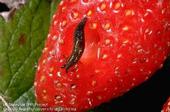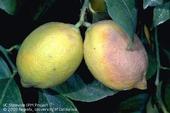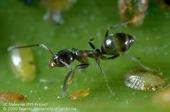
Last Saturday, UC IPM staff greeted a swarm of visitors at their Picnic Day booth. Picnic Day, UC Davis' annual Open House event, invites people to visit the campus and interact with fun and educational exhibits. UC IPM has participated in Picnic Day for more than a decade and this year attracted visitors to their booth with live insects like hissing cockroaches, a termite colony, and crane flies. UC IPM staff answered many questions about pests, pesticides, and cleared up misconceptions about some common insects.
What did we talk with people about?

Snails and slugs can be destructive pests in gardens and landscapes when they devour entire seedlings or chew holes in leaves, flowers, fruit, and even the bark of plants.
Manage these pests by getting rid of their hiding places, setting up traps, or planting resistant plants.
For more information about effective ways to manage snails and slugs, read the newly revised Pest Notes: Snails and Slugs by Cheryl Wilen, Area IPM Advisor, San Diego, Orange, and Los Angeles counties; and Mary Louise Flint, Extension Entomologist Emerita, UC Davis and UC IPM.

Brown Rot
Monitor for this disease by checking for damaged fruit on your tree, as well as fruit in storage. Sometimes affected fruit develops a pungent odor and can ruin fruit held in storage. See the UC IPM web page on Brown Rot to learn more.
Citrus Leafminer
If you see what look like small “tunnels” on your citrus...

Download the free booklet at the bottom of the page!
1. Ants
Most people deal with ants around their home at some point. Because most ants live outdoors, focus efforts on keeping ants from entering buildings by caulking entryways. Follow good sanitation practices to make your home less attractive to ants. Spraying ants inside the home will not prevent more ants from entering. Use baits to control the ant colony. Pesticide baits work by attracting worker ants who then take the poison back to the nest where the entire colony, including queens, can be killed. In the landscape, ants protect...


